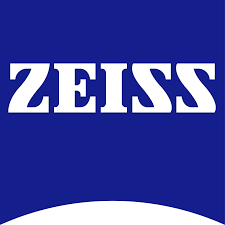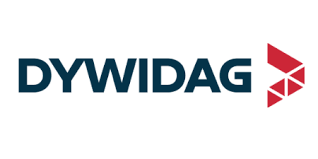Event Stream Processing Market Report
Published Date: 15 December 2025 | Report Code: event-stream-processing
Event Stream Processing Market Size, Share, Industry Trends and Forecast to 2033
This report provides an in-depth analysis of the Event Stream Processing market, covering key insights, forecasts, and growth trends from 2023 to 2033. It highlights the market size, segmentation, regional dynamics, and leading players in the industry.
| Metric | Value |
|---|---|
| Study Period | 2023 - 2033 |
| 2023 Market Size | $8.70 Billion |
| CAGR (2023-2033) | 9.2% |
| 2033 Market Size | $21.62 Billion |
| Top Companies | Apache Kafka, Amazon AWS, Microsoft Azure Stream Analytics, IBM Streams |
| Last Modified Date | 15 December 2025 |
Event Stream Processing Market Report (2023 - 2033)
Event Stream Processing Market Overview
Customize Event Stream Processing Market Report market research report
- ✔ Get in-depth analysis of Event Stream Processing market size, growth, and forecasts.
- ✔ Understand Event Stream Processing's regional dynamics and industry-specific trends.
- ✔ Identify potential applications, end-user demand, and growth segments in Event Stream Processing
What is the Market Size & CAGR of Event Stream Processing market in 2023?
Event Stream Processing Industry Analysis
Event Stream Processing Market Segmentation and Scope
Tell us your focus area and get a customized research report.
Event Stream Processing Market Analysis Report by Region
Europe Event Stream Processing Market Report:
In Europe, the Event Stream Processing market is projected to grow from $2.48 billion in 2023 to $6.16 billion by 2033. Key drivers include stringent regulations on data management and privacy, necessitating the deployment of real-time data processing capabilities to ensure compliance.Asia Pacific Event Stream Processing Market Report:
In the Asia Pacific region, the Event Stream Processing market was valued at $1.67 billion in 2023, with projections to grow to $4.16 billion by 2033. The growth is primarily driven by the increasing number of internet users and mobile devices, particularly in countries like China and India, along with rapid urbanization and industrialization.North America Event Stream Processing Market Report:
North America is expected to maintain its dominance in the Event Stream Processing market, reaching $8.01 billion by 2033 from $3.22 billion in 2023. This growth is propelled by the presence of major tech companies, high adoption of advanced analytics, and the rapid shift to cloud-based solutions in business operations.South America Event Stream Processing Market Report:
The South American market for Event Stream Processing is expected to increase from $0.47 billion in 2023 to $1.16 billion by 2033. This region is witnessing growth due to the digitalization of various sectors, alongside growing investments in cloud technologies and data analytics solutions.Middle East & Africa Event Stream Processing Market Report:
The Middle East and Africa market is anticipated to experience growth, from $0.86 billion in 2023 to $2.14 billion by 2033. Increasing investment in digital transformation and smart technologies, particularly in the UAE and South Africa, is facilitating the adoption of Event Stream Processing solutions.Tell us your focus area and get a customized research report.
Event Stream Processing Market Analysis By End User
Global Event Stream Processing Market, By End-User Industry Market Analysis (2023 - 2033)
The key end-user segments in the Event Stream Processing market include Financial Institutions, IT Companies, Government, Logistics and Transportation, Energy Sector, Telecommunications, Retail, Healthcare, Manufacturing, among others. The Financial Institutions segment is predicted to grow significantly from $3.78 billion in 2023 to $9.39 billion in 2033, driven by the need for real-time transaction processing and fraud detection. IT Companies are also important contributors to market growth, expected to expand from $2.01 billion to $4.99 billion during the same period. Other sectors like Retail and Healthcare, with expected market sizes of $2.66 billion and $2.21 billion by 2033 respectively, are also leveraging ESP for better service delivery and operational efficiency.
Event Stream Processing Market Analysis By Platform
Global Event Stream Processing Market, By Platform Market Analysis (2023 - 2033)
The Event Stream Processing market is divided into Cloud-based Solutions and On-Premise Solutions. Cloud-based Solutions dominate the market, projected to reach $17.58 billion by 2033 from $7.08 billion in 2023, capturing 81.34% market share. On-Premise Solutions are also growing but at a slower rate, forecasted to increase from $1.62 billion in 2023 to $4.03 billion by 2033, holding 18.66% share.
Event Stream Processing Market Analysis By Technology
Global Event Stream Processing Market, By Technology Market Analysis (2023 - 2033)
Technological advancements significantly impact the Event Stream Processing market, particularly with trends in Cloud Deployment, Edge Deployment, and Hybrid Deployment. Cloud Deployment is set to grow from $5.60 billion to $13.92 billion by 2033, alongside Edge Deployment, projected to rise from $1.96 billion to $4.88 billion. Hybrid Deployment is also on the rise, although at a smaller scale, anticipated to increase from $1.13 billion to $2.82 billion. This points towards a trend of integrated solutions that leverage both cloud and edge computing.
Event Stream Processing Market Analysis By Application
Global Event Stream Processing Market, By Application Market Analysis (2023 - 2033)
Applications of Event Stream Processing span multiple industries including Financial Services, Telecommunications, and Retail. In Financial Services, the share is substantial, capturing 43.46% with projections from $3.78 billion to $9.39 billion by 2033. Telecommunications and Logistics and Transportation are also significant, with projected increases from $2.01 billion to $4.99 billion, and $0.89 billion to $2.21 billion respectively, illustrating the diverse use case of ESP.
Event Stream Processing Market Analysis By Deployment Type
Global Event Stream Processing Market, By Deployment Type Market Analysis (2023 - 2033)
The deployment types in Event Stream Processing include Cloud-based, On-Premise, and Hybrid. Cloud Deployment is leading with a significant market share and expected growth from $5.60 billion in 2023 to $13.92 billion by 2033. On-Premise is also sizable but less dominant, set to grow at a modest pace, while Hybrid Deployment is emerging as businesses look for flexible solutions to meet evolving data processing needs.
Event Stream Processing Market Trends and Future Forecast
Tell us your focus area and get a customized research report.
Global Market Leaders and Top Companies in Event Stream Processing Industry
Apache Kafka:
Apache Kafka is one of the most popular open-source platforms, designed to handle real-time data feeds well and actively used in various industries for building real-time applications.Amazon AWS:
AWS provides comprehensive cloud services, including Kinesis, which supports real-time processing of streaming data, benefiting organizations looking for scalable and reliable solutions.Microsoft Azure Stream Analytics:
A powerful service that integrates with Azure for efficient processing of streaming data, providing analytics at scale for enterprises.IBM Streams:
IBM Streams leverages advanced analytics for complex event processing, suitable for enterprise-level applications that demand high data throughput.We're grateful to work with incredible clients.









FAQs
What is the market size of event Stream Processing?
The global Event Stream Processing market is projected to grow from a size of $8.7 billion in 2023, with an impressive CAGR of 9.2%, expected to reach significant heights by 2033.
What are the key market players or companies in this event Stream Processing industry?
Key players in the Event Stream Processing industry include Microsoft, IBM, Confluent, Amazon Web Services, and Oracle. These companies are instrumental in driving innovations and advancements in technology, shaping the market.
What are the primary factors driving the growth in the event Stream Processing industry?
Major growth drivers include an increasing demand for real-time data processing, the rise of IoT, the need for enhanced business insights, and advancements in cloud technology that facilitate scalable solutions.
Which region is the fastest Growing in the event Stream Processing?
The fastest-growing region for Event Stream Processing is North America, rising from $3.22 billion in 2023 to an anticipated $8.01 billion by 2033, followed closely by Europe and Asia Pacific.
Does ConsaInsights provide customized market report data for the event Stream Processing industry?
Yes, ConsaInsights offers tailored market report data, enabling businesses to acquire specific insights tailored to their unique needs and objectives within the event-stream-processing landscape.
What deliverables can I expect from this event Stream Processing market research project?
You can expect comprehensive deliverables including detailed market analysis, segmentation insights, competitive landscape reports, regional breakdowns, and future market trends to assist strategic planning.
What are the market trends of event Stream Processing?
Key market trends include increasing adoption of cloud-native solutions, emphasis on data security, the rise of machine learning integration, and a shift towards hybrid and edge computing for real-time analytics.
